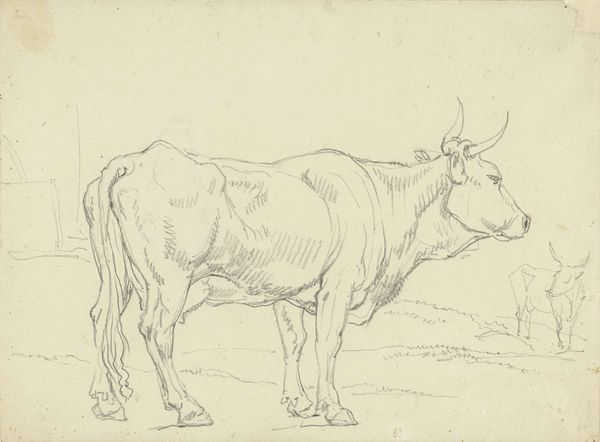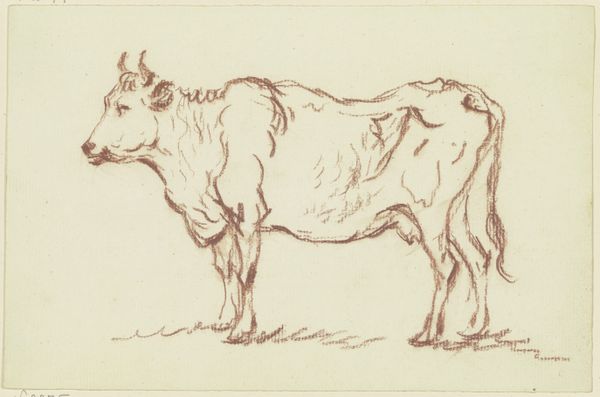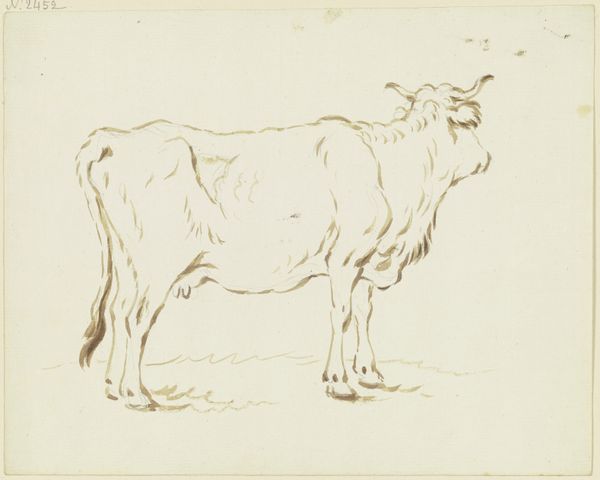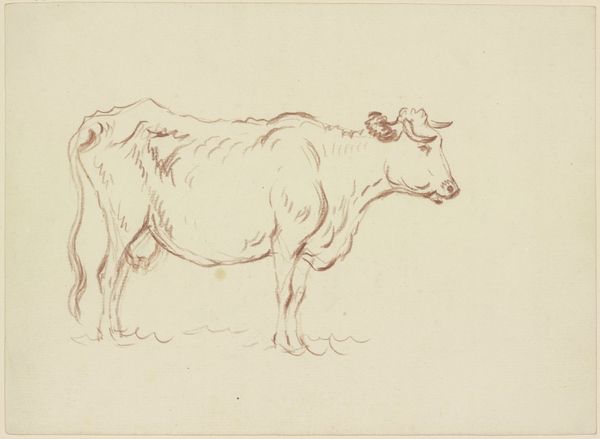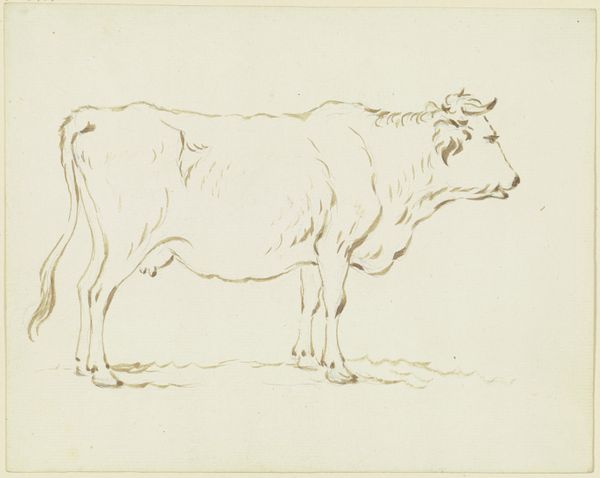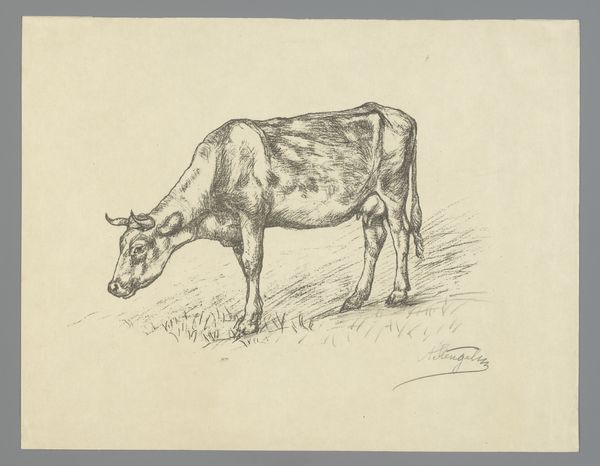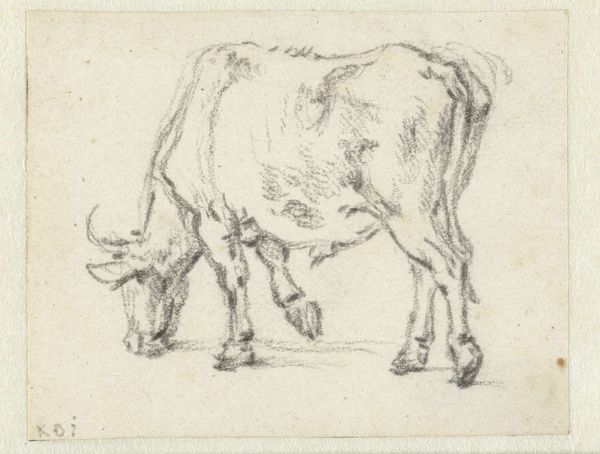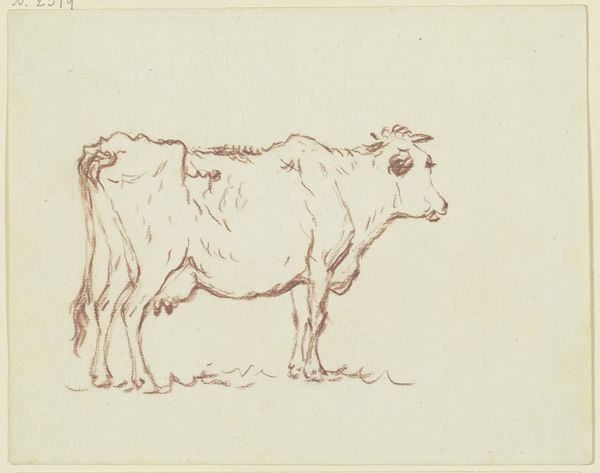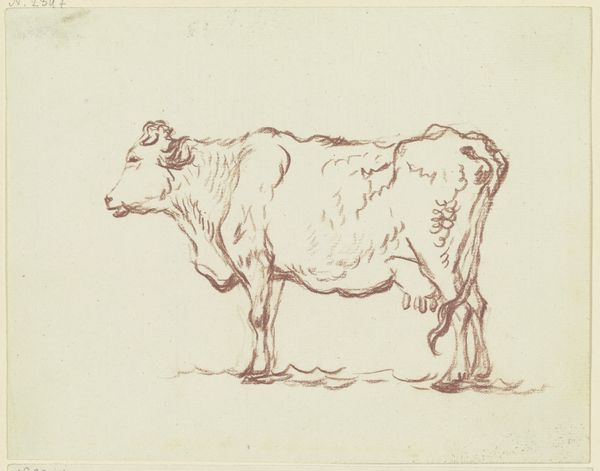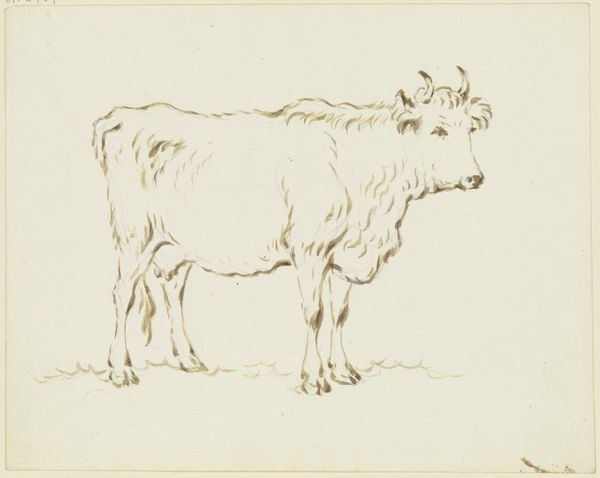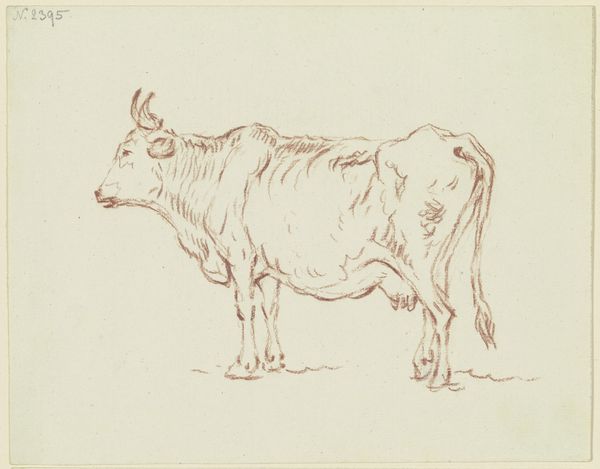
drawing, pencil
#
drawing
#
light pencil work
#
quirky sketch
#
pencil sketch
#
landscape
#
figuration
#
personal sketchbook
#
idea generation sketch
#
ink drawing experimentation
#
pen-ink sketch
#
pencil
#
sketchbook drawing
#
sketchbook art
#
realism
#
initial sketch
Dimensions: height 177 mm, width 198 mm
Copyright: Rijks Museum: Open Domain
Curator: Look at this unassuming sketch, seemingly simple yet rich with latent commentary. It’s titled “Standing Cow, Facing Right, with Man with Hat” by Hendrik Voogd, likely created sometime between 1788 and 1839. Editor: The sketch evokes a peculiar feeling…an off-kilter calm? The lines are so delicate, and the composition so straightforward, that it belies, I think, a more complex interplay of power. Curator: Precisely. We see here the pastoral ideal, the romantic vision of agrarian life, sharply juxtaposed with the reality of animal husbandry and social hierarchy. Consider the symbolism of the cow itself - in Dutch Golden Age painting, cattle were stand-ins for prosperity. Editor: Yes, they’re emblems, loaded with meaning. And Voogd complicates things by literally obscuring the man's face behind the bulk of the cow! It immediately suggests themes of anonymity, labor... and perhaps even exploitation. The hat… such a generalized detail... suggests a broader social type. Curator: Absolutely, the obscured face is fascinating. It flattens him to the role of shepherd or farmhand—anonymous labor supporting the idyllic, bovine symbol of wealth and national pride. How might this critique relate to class structures and land ownership of the period? Is Voogd pointing toward the cost of prosperity? Editor: This feels like Voogd gently subverts our expectations about pastoral life, subtly nodding toward social inequality of rural life. Even now, the power dynamics jump off the page, so immediate. Curator: Well, reflecting on this deceptively simple sketch makes you think about whose labor allows us to build monuments to art, and who benefits most from those cultural structures. Editor: Indeed, Voogd compels us to consider who tends the symbolic "cattle" of our own time, and whose stories remain half-hidden in plain sight.
Comments
No comments
Be the first to comment and join the conversation on the ultimate creative platform.

